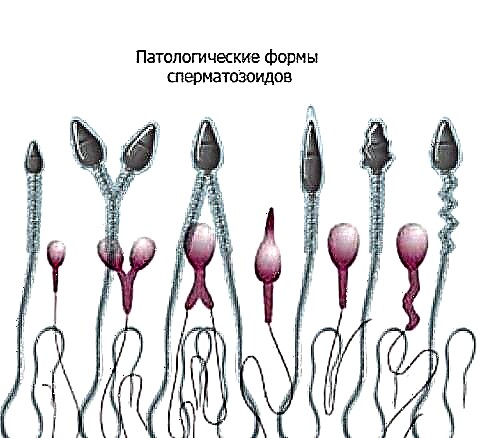
The benefits of sculpting for the all-round development of a child have long been proven and are not questioned, however, modern industry has managed to create such a huge variety of different masses suitable for this occupation that it is not easy for a simple layman to understand them.
Each of them has its own advantages or is ideal for making crafts of a strictly specific type, so it cannot be said that all masses for modeling are interchangeable. As for the ball plasticine, it is still a novelty for most parents, therefore, it requires more careful consideration.

What it is?
Actually, it is rather strange that this mass is called plasticine, because in fact it has absolutely nothing to do with this material. It is more correct to say that ball plasticine - this is a set of a huge number of small balls of approximately the same size, which are most often made from foam, although theoretically manufacturers can replace it with other similar materials.
Such balls are connected to each other using a special glue, which also differs from manufacturer to manufacturer. The mass can be found both ready-made, already mixed with glue, and dry - then the person who will sculpt himself mixes the balls with glue immediately before starting the creative process.

Since the particles connected by the adhesive must be detached quite easily so that it is not difficult even for a small child, the grip between them is low, which affects the strength of finished products. Some types of such a mass practically do not imply the creation of large figures with complex parts at all, since they simply will not hold.
But even if the ball plasticine is chosen with an eye to solidification, it should be remembered that crafts made from it are quite fragile. Therefore, playing with toys made from this material is not recommended.
Most often, ball plasticine is used for sculpting on a flat surface - excellent applicative pictures are made of it, various objects are pasted over with it, such as jars, eggs and much more. In a sense, this material can be called decorative.
Kinds
Most often, ball plasticine is classified into two main categories: particle size and, if possible, reusable. Each of these categories assumes two types of material, the total mass for modeling is presented in total by four main types of plasticine. According to the particle size, ball plasticine is divided into coarse-grained and fine-grained.
Large grains are often chosen for young children who have a tendency to pull everything in their mouths. Due to the size of the particles, the chances that the baby will swallow them are at least slightly reduced. The small diameter of individual elements is good because allows you to more carefully emphasize small details, whether it is a three-dimensional figure or a picture on a plane.


As for the possibility of reusable use, it is either there or not. Most types of ball plasticine assume that the child is not trying to create some kind of masterpiece that his parents or he himself would want to preserve for a long time, therefore such a mixture is used only for modeling for the purpose of training skills or for fun.
Naturally, such a mass holds its shape worse, crafts from it can be "disassembled" at any time and turned into something completely new. Freezing plasticine is created with a completely opposite purpose - it is used to create at least relatively durable products.

Despite the fact that the figure will turn out to be fragile, and it is very risky to play with it, the resulting debris will not be able to melt into something else - they will only crumble, not connecting together.
This type of mass hardens in the open air within 24 hours, therefore it is sold in special jars that allow it not to dry until it is shaped.

For all other criteria, some deviations are quite rare. Ball plasticine is almost always airy, it is extremely light, which is very good, in particular, for children's creativity, however, its density may differ from manufacturer to manufacturer, and in some cases you can find a special mass for stronger hands, which is heavier.
Usually such plasticine is foam, but some manufacturers, in order to save on the production process or for any other purpose, can make balls from other materials, the main selection criteria for which are lightness and elasticity.

Sets
Today, most types of plasticine are sold not only as a material, but also in the form of sets, for example, with tools for modeling, molds and other useful and interesting accessories. Ball plasticine does not look like an exception here, however, none of the described additions to it are needed - usually it is supplemented by a bonus so unusual for other types of modeling masses, such as decorations. In fact, this is quite logical, because the material is used in many ways to create paintings on the plane.
Coloring assumes the presence of ready-made contours of drawings on topics that are close to children of a certain age and range of interests, for example, depicts various fairy tales, frames from popular cartoons, other images that are interesting to kids like cars for boys and portraits of fairies for girls. to.
The child only has to apply multi-colored particles of ball plasticine to the zones limited by these contours to get a very bright and unusually embossed drawing


Since the coloring and the "dye" itself are produced in a set, there is no doubt that the diameter of the balls is small enough to successfully "draw" all the details of the pictures.

There are also sets with a surprise, where kids are offered to "paint" not just a flat surface, but some object. A small decorative vase, which has a beautiful shape, but a relatively neutral appearance, may well fit as such an item. The child's task is to make a real work of art out of this blank, pasting it on the outside with foam balls of the color that he considers more appropriate.
However, the imagination of the creators is quite extensive - they can easily put in a set and a blank for any beautiful toy, which will not be possible to play, but it is easy to be proud.


Development benefits
Although quite a lot has already been said about the benefits of sculpting for children, in the case of ball plasticine, it is worth paying attention to this topic again, because this material is quite different from other sculpting masses. It can even be noted that such a mixture in its own way combines the developmental effect of both modeling and drawing.

Primarily, fine motor skills of the child's hands develops, but here it is somewhat different from what is required when working with classic plasticine. In particular, the foam version is not very well suited for the traditional occupation of the smallest beginners - sculpting "sausages" and "balls", but it immediately requires a complex, often flat shape.
Here, the typical working movement for the little master will not be so much rolling something as pinching off small fragments and then placing them in the required place.

The second quality to be developed is creative fantasy. Due to the fact that the material is relatively unsuitable for abstract exercises, it is bought mainly for children of relatively conscious age, who already have a fairly clear idea of what they are going to create. Even if there is a coloring book with ready-made contours, the child still has to choose the colors for each field, which already requires a certain imagination.
If there is also no coloring, it means that the kid will have to draw the contours on his own, come up with how it all will look, and embody his plan into reality, which greatly develops spatial thinking.

Thirdly, that sphere of imagination develops, which is responsible for thinking through complex plans implementation of any projects. The procedure for making even a relatively simple craft from ball plasticine involves going through a number of stages, including preparing the balls by mixing them with an adhesive base (if the manufacturer has not done this earlier), creating the desired shades from the available colors (if necessary), thinking through and creating a sketch of the contours, filling them with mass.
In other words, even before starting the implementation, the child must imagine in detail a rather long and complex process - this task is not as easy as it seems, and this is the only way to train the brain.

Tips for choosing
First of all, it is worth noting that ball plasticine is recommended for children of a later age than usual. Different people have different opinions regarding the possible start of exercises with this material, but on average they agreed that it is worth starting at about the age of 5 years (of course, in the direct presence of adults).
This cannot be called a requirement, however, it is advisable that before trying to work with ball plasticine, the child already had certain skills at least in modeling and drawing.

If we talk about the choice of a specific subspecies of mass, then everything here already depends on the goals. In particular, reusable ball plasticine is more suitable for teaching beginners, or for training those children who have already noted some success.
Its fine-grained version, due to the small size of the parts, will a little more resemble a specific plasticine, while the coarse-grained variety can be called a kind of designer.
If the child is still quite small, it is better to choose a mass with large grains for him - the chances of accidentally swallowing even one such particle are less.


The hardening ball plasticine is purchased only if if there is confidence that the little master will be able to cope with the task that he sets for himself. This will help preserve the masterpiece, but if the craft is spoiled by sloppy, inept or ill-considered actions of the baby, then it will be impossible to correct the situation. The coarse-grained version is suitable for creating large figures and paintings, provided that the clearly visible surface relief can be regarded as a special artistic effect.
A fine-grained mass must be chosen to noticeably simplify the "drawing" of small details, as well as to give the product a different type of texture, which from a long distance may not even be perceived as grainy.

Reviews
Ball plasticine is still a creative tool designed for an amateur. Nobody particularly criticizes him, but it cannot be said that everyone knows and loves him. As for the positive features, consumers usually highlight the unusual texture of finished products from it, the variety of colors, the convenience of packaging in which such a mass is sold for modeling, and the possibility of long-term storage of crafts, provided selection of the right mass and respect.
Separately, it should be noted that ball plasticine does not stick to hands, and also does not stain clothes, which is very important in the case of small children.


If we talk about certain negative qualities, then they indicate, first of all, that the material is not suitable for primary training in modeling, and therefore it is designed for a minority, because most of the kids still abandon this activity over time. At the same time, due to the graininess of the structure, the likelihood increases that the child will swallow individual particles, or simply loosen them during the sculpting process, gradually reducing the amount of material used.

For information on what you can do with a child from ball plasticine, see the next video.



